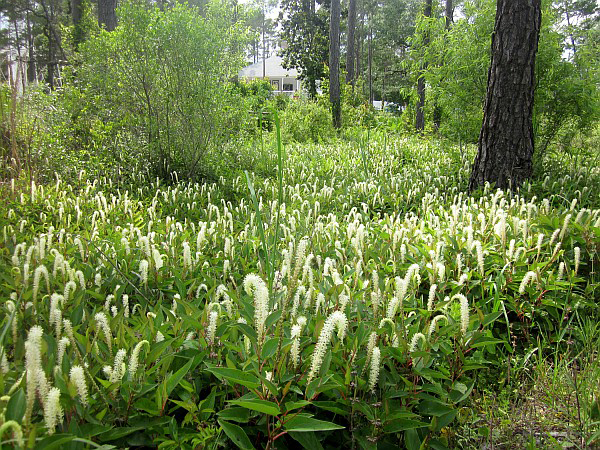Lizard’s tail
Pictured above: LIzard’s tail (Saururus cernuus) by Laurel Newman. Click on terms for botanical definitions. View post as a PDF.
Lizard’s tail is a perennial aquatic wildflower. Its tiny, white blooms are born in abundance on long, “nodding” racemes, making for a distinctive and showy display. The flowers are also quite fragrant. Leaves are cordate to spatulate, stalked and alternately arranged. They clasp the stems, which are hairy and reddish in color.
Lizard’s tail flowers in early spring through summer and occurs naturally in shallow swamps and marshes, along ditches and drainage canals, and in wet forests. It attracts a variety of pollinators and is also eaten by foraging ducks such as wood ducks.
Both the common and genus name refer to the flower’s resemblance to a lizard’s tail.
Family: Saururaceae (Lizard’s tail family)
Native range: Throughout most of Florida
To see where natural populations of lizard’s tail have been vouchered, visit www.florida.plantatlas.usf.edu.
Hardiness: 8A–10B
Soil: Rich, mild to acidic, saturated soils
Exposure: Full sun to partial shade
Growth habit: 2–4’ tall
Garden tips: This plant is best suited for pond, drainage swale and wetland edges. It spreads by rhizomes and can form dense colonies.
Lizard’s tail is often available at nurseries that specialize in native plants. Visit PlantRealFlorida.org to find a native nursery on your area.

